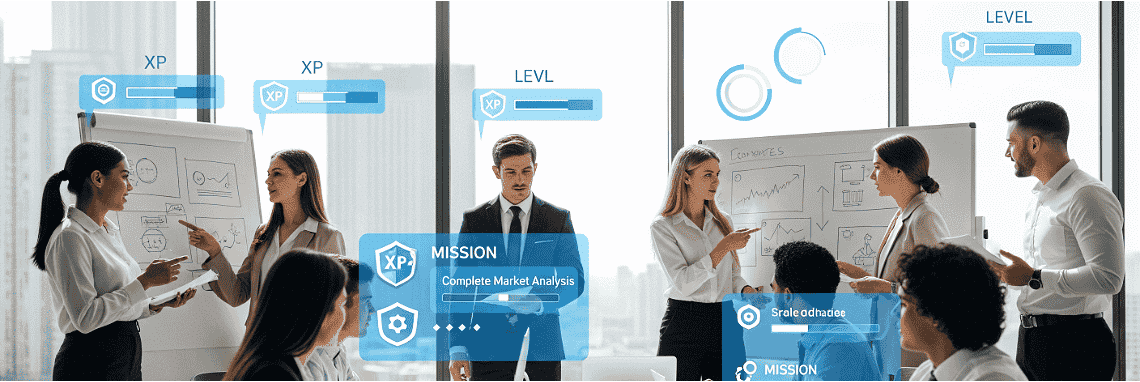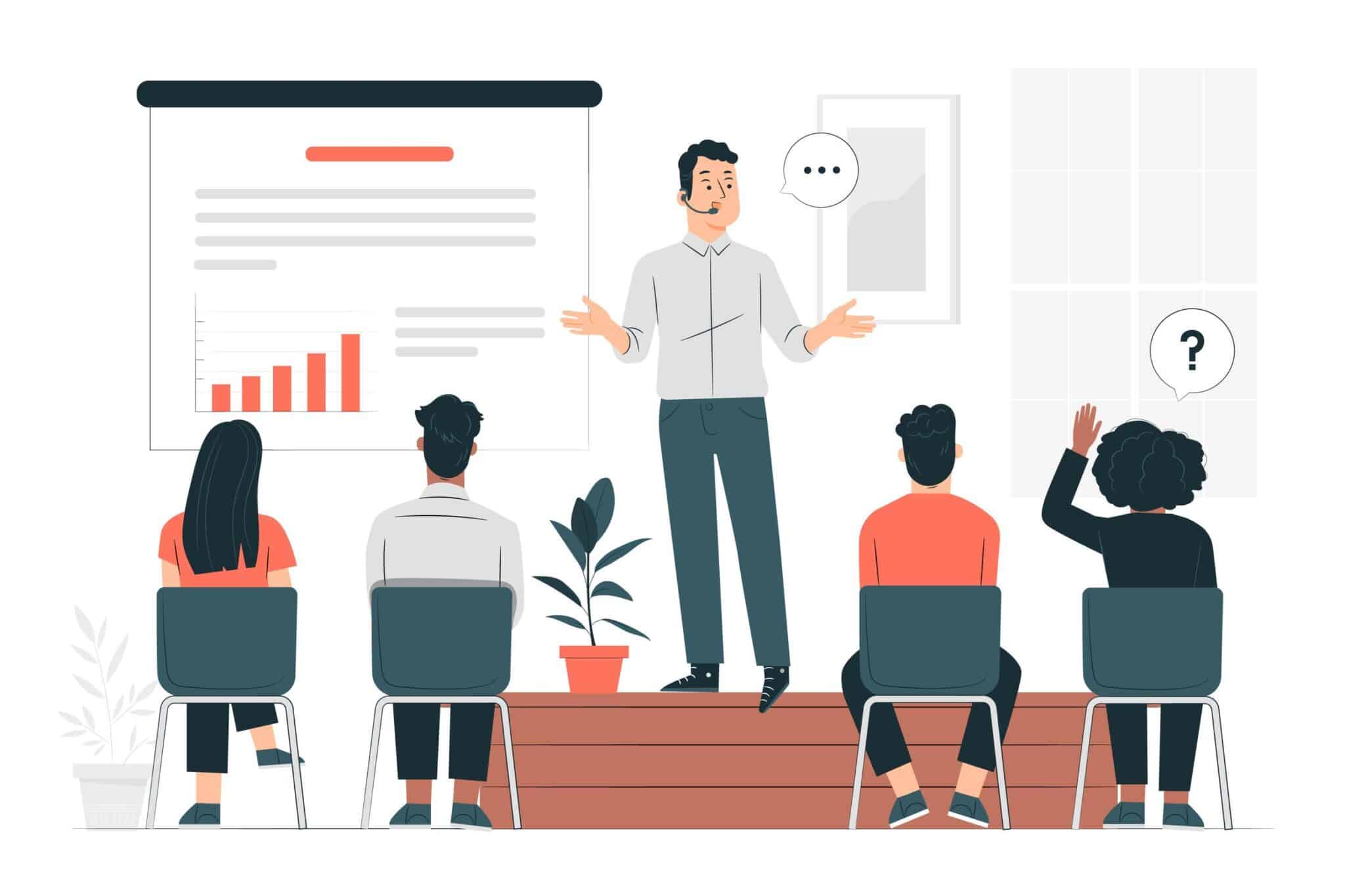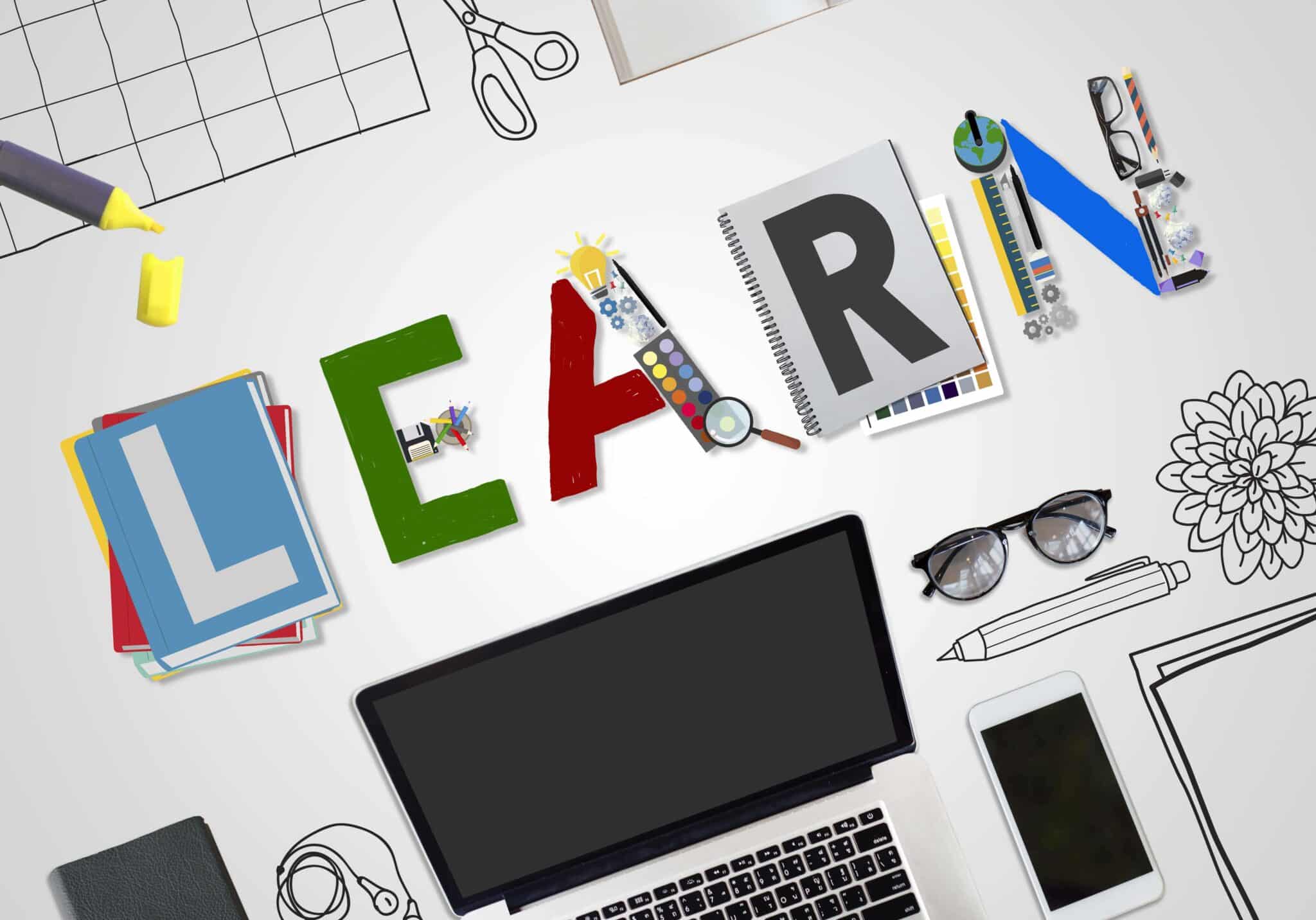It was a workshop to teach learners the science of storytelling.
After checking on their expectations from the day, we started it off with an innocuous question: “What is the story behind your name?”
Immediately, the room broke out in smiles. People naturally love hearing and talking about their own names because it’s tied to their identity, history, and sense of self.
As the stories were swapped around, the atmosphere in the room settled down to one of warm comfort. The Facilitator was not a scary “sage on the stage” anymore!
Is your learner immediately mentally stimulated?
Table of Contents
The first 15 minutes of any workshop is critical. Like in any other relationship, this is the phase where both sides are silently sizing up each other. But here is the twist. This is not because we as humans are naturally judgemental of each other. Rather it is because we are making a quick assessment and conclusion about how the next few hours of our own lives are going to be. Engage the learners quickly, stimulate their thinking & imagination – and like in the movies, there is a temporary “suspension of disbelief.” The disbelief that the Facilitator is at the end of the day actually trying to teach something. And rarely do people like to be taught!
“Wow such interesting back stories …. How many of you knew these stories before?”
“If all of you are ready, let’s get into a small activity now…”
And with that the Facilitator broke the team into two groups. One was given a sheet of paper with a lot of data. The other was given the same, but as a case study; a story format. After a few minutes where they were allowed to absorb that information, the sheets were taken back.
“Alright, recall time!”
When both groups were asked to recall what they just read, something unsurprising happened:
Team A (facts) remembered scattered details but struggled with the order and significance.
Team B (story) recalled nearly everything – including the emotions.
Is the content contextual to the daily work that the learners do?
Early into a workshop, learners need to know – “Why should I be learning this?” “What happens if I continue doing things the way I always have done before?” And this needs to be shown. Not told by the Facilitator. This could be done in many ways – through a compelling video, an activity (like above), through a real-life story or by tapping onto the lived experience of the learner. When we build on lived experiences of learners, we are helping them build on existing neural pathways. And as our neuroscientists have taught us, “Neurons that fire together, wire together.” Once the realisation sinks in, the intrinsic motivation of learners naturally emerges.
“Before we get into the how of storytelling – can each of you think of an instance or a situation where you want to land your message through storytelling?”
“Here is an easy format that you could follow to frame your story: Just fill in the blanks below.”
“I want to tell a story about ______________________, so that I can _____________________.”
“Here are some examples:”
- “I want to tell a story about my leadership style, so that I am understood better.”
- “I want to tell a story about how we handled a crisis as a firm, so that I can inspire others at this time.”
- “I want to tell a story about our customer centricity, so that our team learns about what is expected of them.”
Is your learning delivery tailored to the individual learner?
Learning that is not personalised feels theoretical for learners. Why? Because learning isn’t about dumping information – it’s about helping people see how new ideas fit into their world. It is all good that Steve Jobs was a great storyteller, but “How do I become one?”. Or even fundamental is the question that is running in their minds, “Can I become a good storyteller?” So, soon as we establish the importance of the topic, it is critical for the Facilitator to invite the learner to bring it to their own personal context. This reflection ensures that everything that follows – as frameworks or concepts, is applied by the learner to their own personal context. It is no longer about Steve Jobs – it is about them. It is only now that the learner is ready to absorb the new knowledge to follow.
“Who is the audience?”
“What are their needs?”
“How do we get into their skin?”
“An interesting tool to do this is the empathy map”
And so, we now get into the heart of the workshop, introducing tools and frameworks – which we encourage learners to apply to their own individual context.
Is your learning design Experiential?
New knowledge when being introduced should be in the experiential format which engages multiple senses. Why? Because people don’t learn best by listening; they learn by experiencing. They learn by doing. Experiences create emotions, and emotions make learning stick. And experiential learning has a huge repertoire of tools that could be deployed:
- Role Plays – To practice real-world scenarios in a safe environment.
- Case Studies – To analyse, reflect, and solve practical challenges.
- Interactive Activities – To break mindsets and encourage new ways of thinking.
- Simulations – To make learning engaging and memorable.
- And much more.
“Alright folks, time for a break”
Ideally after every 90 minutes in a workshop there must be a break. When there is a cohort of 30 learners, not less than 15 minutes for a tea break on either side of the lunch break and not less than 60 minutes for the lunch break. And remember this is an equally important part of making learning happen.
Why is this important?
Our brains need to switch between focus mode (deep concentration) and diffuse mode (relaxed reflection) to make lasting connections. Skipping breaks doesn’t help learning – it hurts it.
“No more theory or frameworks – time now for you to prototype your stories.”
Do your learners get an opportunity to apply what they have learnt from you?
A cardinal rule for learning Facilitators and L&D folks to remember: Less is more.
Many workshops try to stuff too much content into a short time. But knowledge without retention is useless. A better paradigm is to focus on depth over breadth. If learners walk away with just 2-3 clear takeaways at the end of a full day workshop, Facilitators can pat themselves on the back. Instead of overwhelming participants with multiple frameworks and concepts focus on just one or two, ensuring that they truly understand and apply them. Why? Because a learner who leaves with a clear “Aha!” moment is more likely to actually implement the learning.
Also, application must happen inside the workshop, not after.
Most learning programs assume that participants will apply what they’ve learned after the workshop. But the reality is that daily work pressures take over, and new knowledge often remains just theory. No wonder you hear the often-said refrain, “Does training really work?”
“Now that each of you has prototyped your stories – let’s take it for a test run!”
“Please get into groups of 4 and try out your stories with others in your group. After you finish, keep an open mind and invite feedback from the others.”
“What was most memorable?
What do you have questions about?
What moved or motivated you?
What in your opinion was the big idea?”
Does your learning design give learners an opportunity to get feedback?
If a session is on storytelling, participants should actually create stories and receive feedback within the session. If it’s about decision-making, they should make real-time decisions in a simulated environment. Why? Because practice builds confidence – and confidence leads to action. The goal isn’t just understanding a concept; it’s making sure participants can do it before they leave the room.
“And so, we are now at the end of this workshop.”
“How many of you would like to dive deeper into storytelling?”
The Facilitator’s role in a learning workshop is to spark curiosity, not teach everything. It would be ridiculous for anyone to think that any soft skill like storytelling can be taught in all its nuances, in a single day. A great workshop isn’t about how much the facilitator teaches – it’s about how much the learner discovers.
The job of a facilitator is done if they have succeeded in:
- Making learners curious enough to want to explore more on their own.
- Encouraging discussions, debates, and self-reflection.
- Giving learners a reason to apply what they learn, rather than just consume it.
Why? Because self-driven learning is the most powerful and lasting form of learning. The best facilitators don’t give fish; they teach participants how to fish.
Learning happens when information moves from short-term memory to long-term memory, so that it can be recalled when needed. But for this to happen, learning delivery needs to happen in a very thoughtful, intentional way.
Is this the ideal way to ensure learning happens? Not really – because learning should always be framed as a journey, which emphasises repetition, spacing, feedback and course correction. Picking up any new skill calls for practice over a period of time. However, every learning journey has a component of instructor led training. Also, at times due to internal compulsions, it is not possible for L&D to roll out learning journeys. At such times, thinking about the workshop structure in the above manner would set up your learner for the best chance of success still.
To wrap up, here’s a quick acronym for you to remember, the next time you are evaluating a learning design.
FACETS – The Core Elements of a Powerful Learning Experience
- Feedback – Does the design help learners know the gap they need to bridge before they leave the classroom?
- Application – Does the design give an opportunity to apply the learning to their context within the classroom?
- Contextual – Is the content relevant to their industry & their day-to-day work?
- Experiential – Are we helping learners to “arrive at a realization” or are we only stuffing them with knowledge?
- Tailored – Is the learning personalized to the lived experiences of the individual learner?
- Stimulating – Does the overall flow stimulate thinking and imagination in the learner?
So, the next time you are designing a learning experience or evaluating one, ask yourself – are we covering all FACETS that will make this a powerful learning experience?









